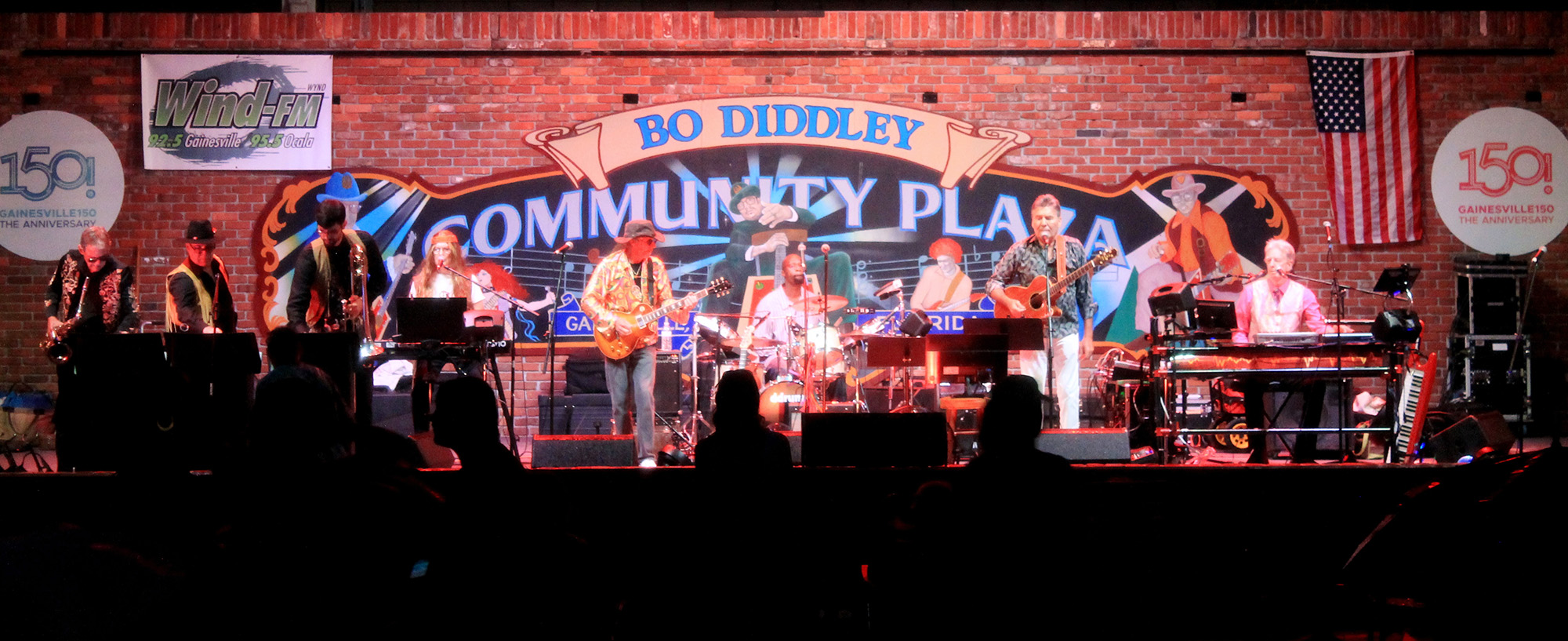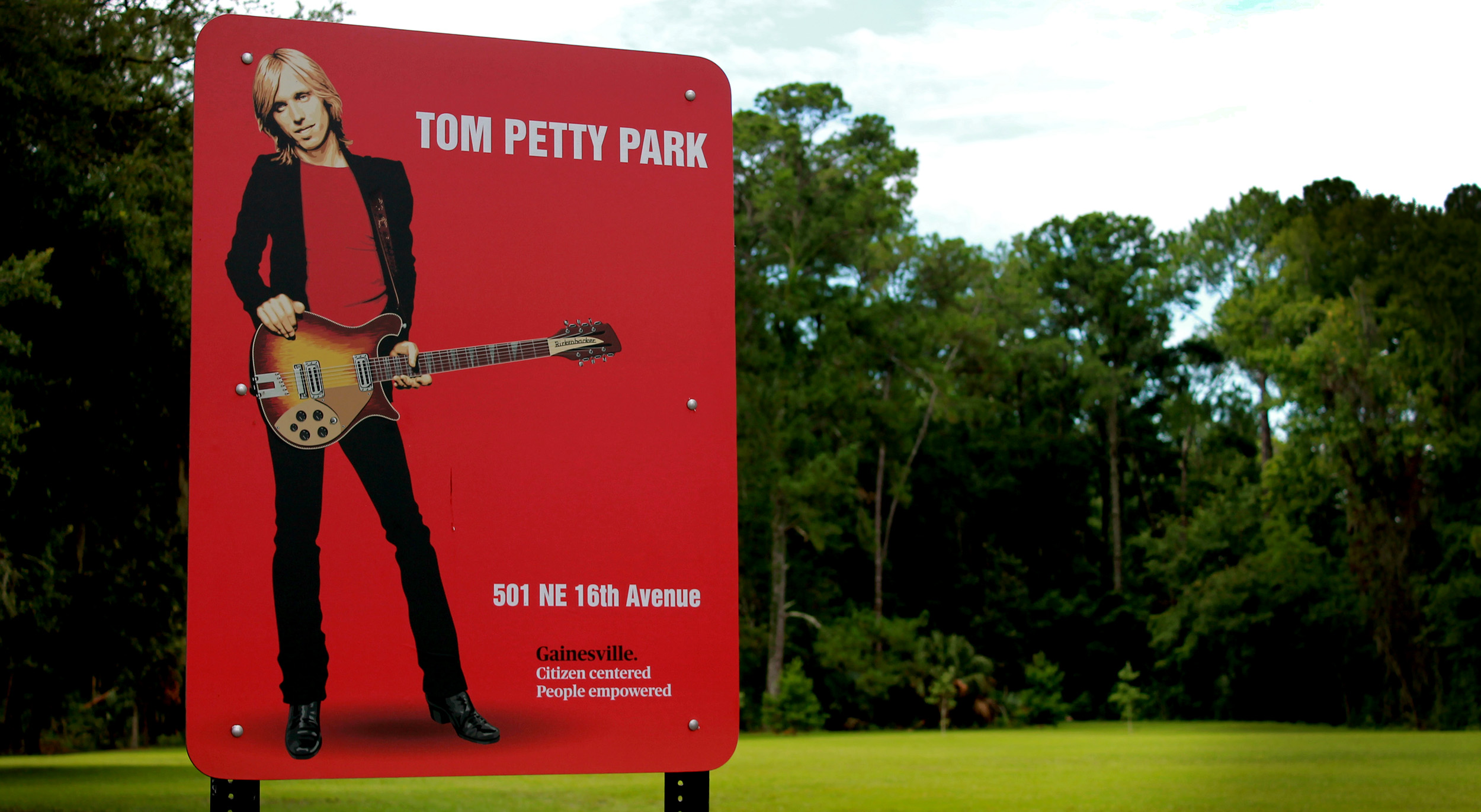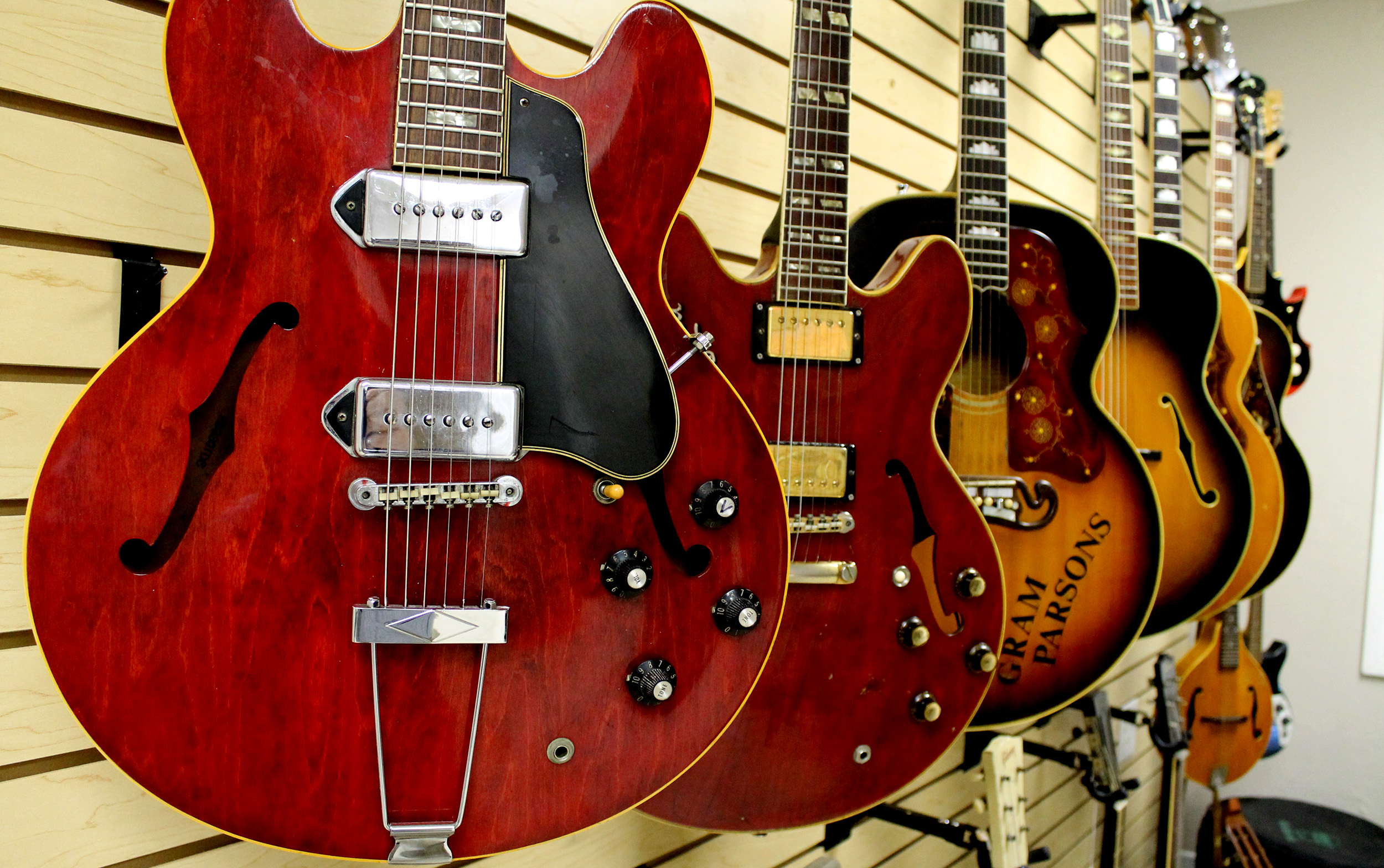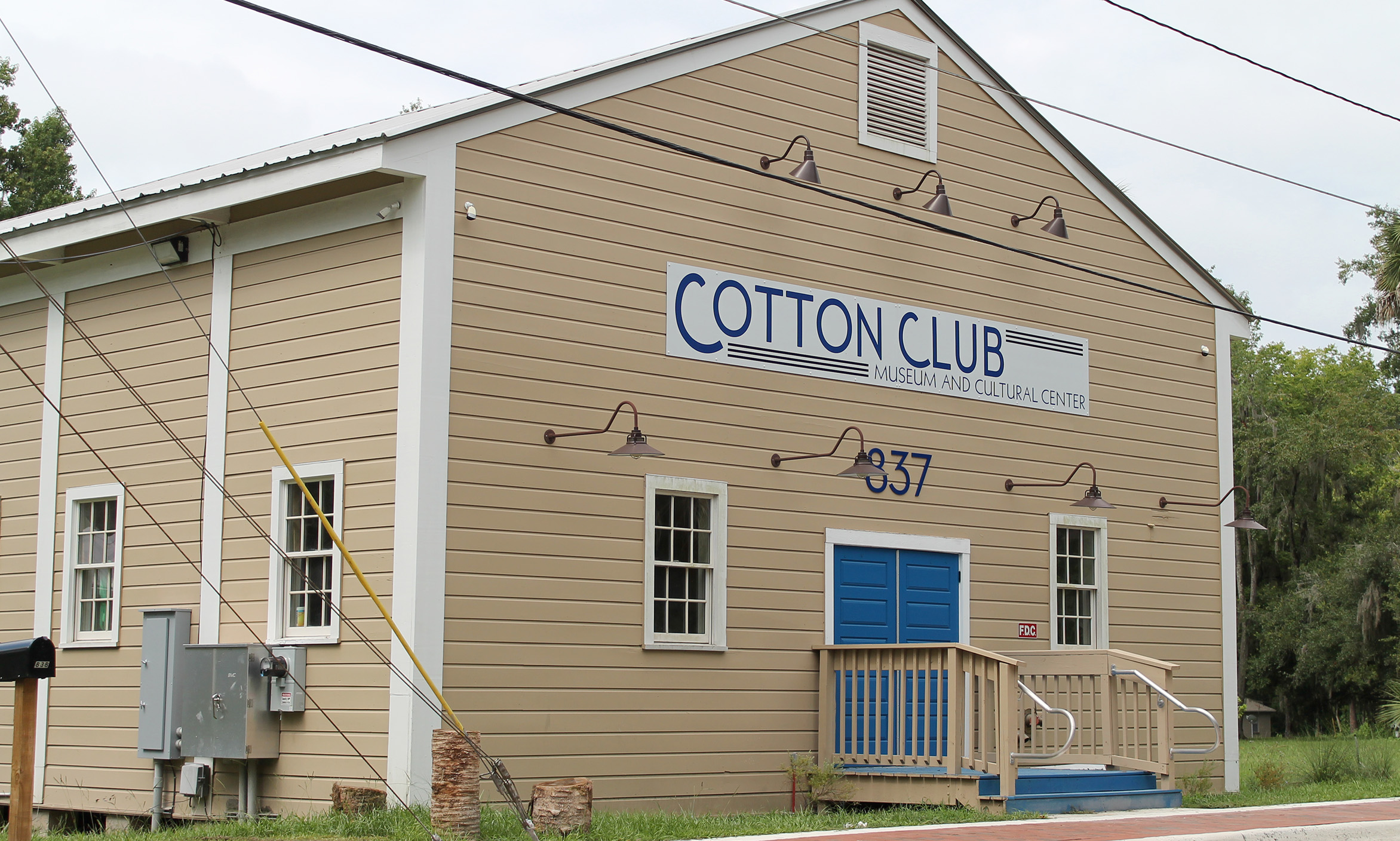
Gainesville rock: Rising from Mudcrutch
When Tom Petty and the Heartbreakers burst onto the national music scene in the late 1970s, the group validated much of the hustle and sound that had been brewing in the southeast, particularly in North Central Florida.
There’s little doubt that Petty put Gainesville on the map.
He and his bandmates inspired a host of well-known musicians across the country who have greatly contributed to different music genres through the years.
Members of Fleetwood Mac, Pearl Jam, the Foo Fighters, Kings of Leon, Sum 41 and Conor Oberst, to cite a few, have all credited Petty as an inspiration.
But there is a lengthy list of other artists that came long before, during and after Petty’s glory days — some more famous than others — who have also made Gainesville as a vibrant music destination for close to 60 years.
“One of the things Gainesville offered was a place to go hear live music,” said Mike Boulware, a local musician. “It was a pretty good, honky-tonk scene here.”


RISE OF ROCK
During the county’s racial segregation era, and through the 1960s, talented black musicians toured through the eastern and southern regions of the U.S.
The entertainers, who were part of what was called the “Chitlin’ Circuit,” would perform music for predominantly black audiences, playing at theaters and nightclubs.
People came in droves to hear jazz music and rhythm and blues (R&B). At the time, black musicians could not perform at white establishments, so venues began popping up around the country to fill the need, while also giving blacks more business opportunities in music.
In Gainesville, the Perry Theater, later called the Cotton Club, opened and hosted Chitlin Circuit artists, including Ray Charles, James Brown and Ellas McDaniel, a.k.a. Bo Diddley. Other artists who toured the circuit included B.B. King, Sam Cook, Little Richard and Marvin Gaye, among others.
Bo Diddley, who lived out the last 13 years of his life in Alachua County, perfected the “Bo Diddley beat,” while playing on the circuit. The iconic 3-2 rhythm has been widely used in rock music songs, including one of Petty’s more successful hits “American Girl.”
Around the same time the circuit was winding down, Americans were also treated to the British invasion in the 1960s. The Beatles, The Rolling Stones and The Who were just some of the bands that moved to the U.S. from the United Kingdom.
The clash of blues and rock later became an intrical part of what’s known as southern rock.
“After the British invasion happened, The Beatles came. Every kid in town realized that “Gosh, if I had a guitar, the girls would scream for me, too,” Boulware said. “That happened all over the country I'm sure, but here, it just seemed like it was everybody.”
Friends began playing music with each other and bands began popping up. One of those young, excited musicians was Petty.
Boulware grew up about two blocks from Petty in northeast Gainesville. The two met as children and later sung in chorus together in middle and high school. In interviews, Petty has said his encounter with Elvis, exposure to The Beatles and Chitlin Circuit artists are what got him hooked on music.
“I’ll be honest, there was 20 other bands in town and if you asked me to pick who was going to be successful then, I would not have picked Tom,” Boulware said. “He just wasn't fully developed, yet.”
To Petty’s credit, Gainesville was rich with several yet-to-be-famous musicians who would go on to sell hundreds of millions of records, collectively. Others, who were just as talented, Boulware says, just didn’t pan out or went a different path.
“Everybody was talented,” he said.
Don Felder and Bernie Leadon lived in Gainesville prior to joining the Eagles and played local gigs, sometimes crossing paths with Petty’s earlier bands. Stephen Stills had not yet been widely discovered and was cutting his teeth. Gainesville musicians Stan Lynch, Benmont Tench, Ron Blair and guitarist Mike Campbell, some of whom were in the Petty band Mudcrutch, would all eventually go on to join Tom Petty and the Heartbreakers.
The eight Gainesville musicians all went on to be inducted into the Rock and Roll Hall of Fame.
“It’s like there was something in the water,” Boulware said.
MUDCRUTCH DAYS
In the early 70s, Gainesville had yet to develop into a sports-crazed college town dominated by the Florida Gators; that was still years away. But a revolving door of rambunctious students and bands were looking for something to do. There was no internet or social media. Video games were just being released. For some, rock ‘n’ roll was the only option.
Cliques of hopeful musicians surrounded themselves with other like-minded teens, often at Lipham Music, to learn from one another or to book gigs and find band members.
Tom Holtz, who worked at Lipham Music, said he first met Felder when they were teens. Holtz, who frequently plays at open mic nights in Gainesville, said he bounced around bands in grade school, playing with other notable guitarists, such as Campbell and Tom Leadon.
As a guitarist himself, Holtz credits Felder as the best player he’s come across.
“He was just that much above everybody else,” Holtz said. “The guy could play stuff that I could barely comprehend.”
Those days, he said, bands had the luxury of playing five to six times a night at venues. The number of gigs provided modest pay for bands and work for friends to get by.
“You don’t see that anymore,” he said. “You’re lucky to play on weekend nights these days. And you’re probably not getting paid any more than you were 30 years ago.”
Petty’s first successful band, Mudcrutch, early on had earned enough money to live out on a run-down home in northwest Gainesville. The property, nicknamed Mudcrutch Farm, was large enough for the band to host festivals. One of their first flyers from 1971 included directions to the property.
Around this time, Mudcrutch had seen modest local success, bouncing between topless dance clubs and playing with the Allman Brothers Band, which was on the cusp of national success.
“They would just assemble a whole bunch of hippies out at the farm and play music until everybody got tired,” Boulware said. “It was great.”
But the Mudcrutch festivals grew so large the band couldn’t keep hosting them. The success of the event, however, made Petty and others consider other goals.
“You had to leave here,” Holtz said. “That was the thing.”
Mudcrutch ventured to California and landed a record deal. They swapped out a few members and were re-formed as Tom Petty and The Heartbreakers. The band went on to become one of the best-selling artists of all time.
“Everybody we knew that went to California just didn’t come back,” Boulware said. “(Petty’s) future was not here.”
Boulware says that Petty and his band had accomplished all that they could in Gainesville and needed to be challenged to reach new heights. Still, he said, few imagined they would be as successful as they were, eventually touring the world for 40-plus years.
The success of the Eagles, Top Petty and the Heartbreakers, and Stephen Still, who joined Crosby, Stills, Nash and Young, shined light on Gainesville for decades. Their effect on other major artists through the years is immeasurable.
Boulware said their success created a self-sustaining scene, locally, for many musicians who knew and helped those players early on in their careers.
“The music business is a fickle business, and anything could happen,” Holtz said. “You really just have to wish the best for everyone and hope for the best for yourself.”
